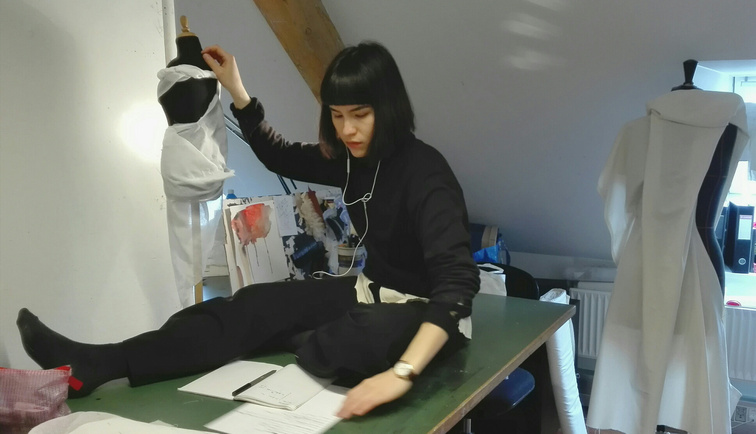First-Year: Draping

For a one-week course, 1st year students learned the basics of draping. Draping is a way for students to learn about grain, proportions, hang, fit and placement of style lines, because the technique gives a deeper understanding of how fabrics work on a body. Being intuitive and dimensional, draping is also a tool for stimulating creativity. Draping allows for designing directly on the dress form or body which offers different possibilities than for instance flat patterning.
The students were introduced to practical draping skills through specific techniques such as draping a collar and more experimental approaches. They were given series of exercises with squares of muslin and calico that involved a set of principles such as using a single cut, cutting part of the material off, cutting a hole etc.
The course concluded with the students selecting one experiment and working on it in full-scale on the dress form in either muslin or calico as a sculptural sketch that could form the basis for further design explorations.

